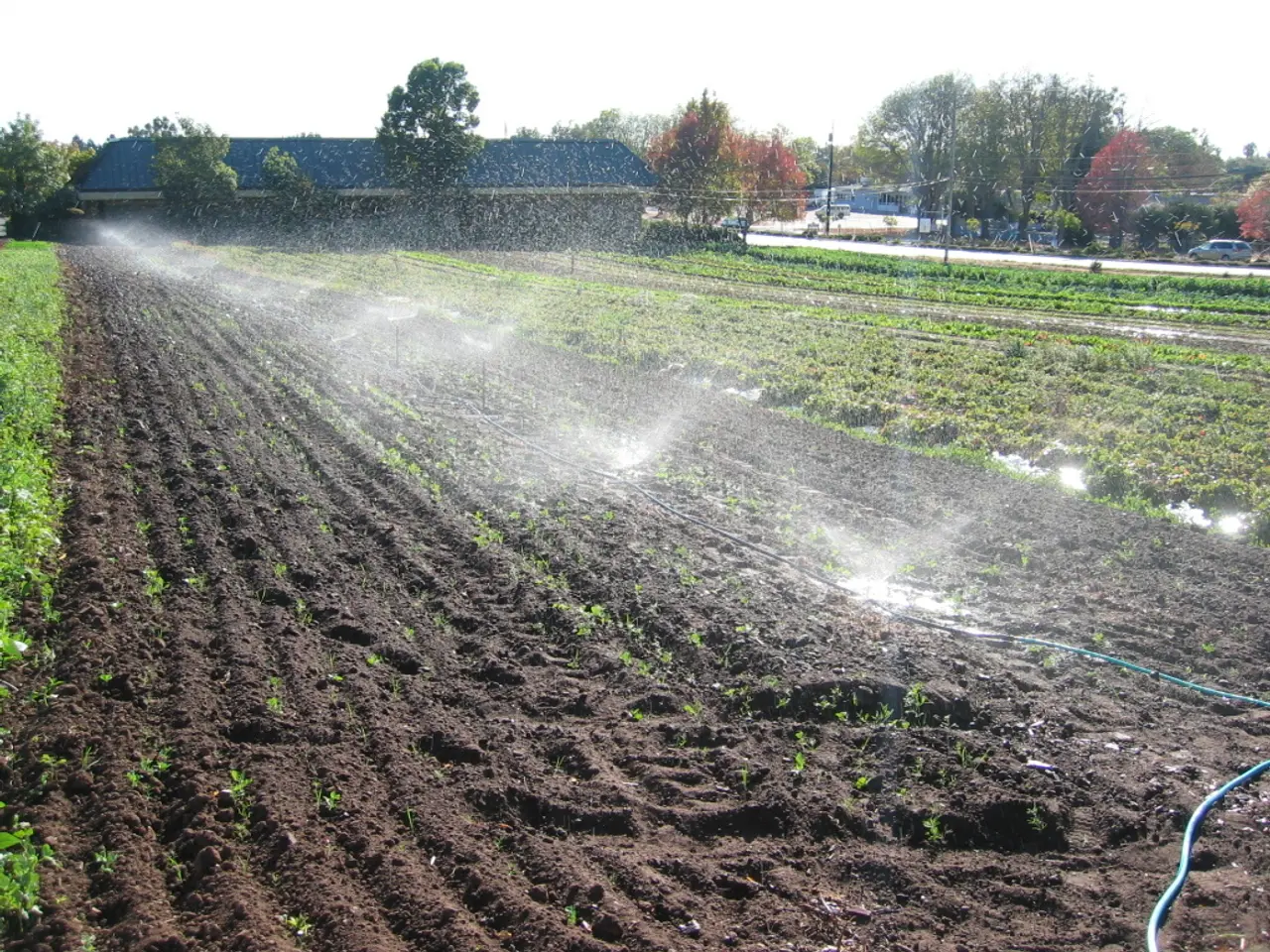Preventing malfunctions in water distribution systems: Tips for success
Maintaining an efficient irrigation system is crucial for a well-watered garden and a healthy landscaping investment. Here are some key steps to follow for regular maintenance and prevention of breakdowns.
Firstly, inspect your system at least once or twice a year, ideally before peak seasons like summer and winter. Look for leaks, damaged pipes, broken or clogged sprinkler heads, valves, and signs of underground leaks such as soggy patches or unexpected water bills.
Regularly cleaning sprinkler heads, nozzles, and filters is also essential to prevent sediment buildup and maintain proper water flow. This task should be done at each seasonal change or every 4-6 weeks during heavy use periods.
Weekly testing of water pressure is also recommended. Normal pressure should be between 30-50 PSI. Abnormal pressure can indicate leaks, blockages, or damaged components.
Adjusting spray patterns monthly as plants grow and weather changes is another important step to ensure even coverage and avoid watering hard surfaces.
Checking and adjusting watering schedules seasonally based on weather conditions is also crucial. Reducing watering in cooler months can help avoid waste and overwatering damage.
Inspecting and testing valves individually, along with checking the controller settings and firmware, is essential to ensure zones operate correctly and timers reflect seasonal needs.
Maintaining a detailed log of all inspections, repairs, and adjustments can help track system health and support warranty claims or negotiating service contracts.
Major maintenance should be done early spring for system startup to catch winter damage, mid to late summer to optimize during peak use, and early fall for system winterization and reducing watering. Weekly to monthly checks (e.g., pressure, spray adjustment, cleaning filters) keep the system efficient and prevent costly repairs.
For complex repairs or electronic diagnostics, it is advisable to consult professionals. However, many cleaning and adjustment tasks can be done DIY.
Installing rain sensors can help optimize water usage and save water. Choosing quality components for an irrigation system can help it withstand environmental stresses and last longer.
Regular maintenance extends the lifespan of an irrigation system, conserves water, and protects your landscaping investment. Regular tests, at least once a month, can help prevent problems in an irrigation system. A well-maintained irrigation system ensures uniform water distribution, reducing waste.
Visible malfunctions, such as dry zones or unusual flooding, are clear signs of a problem in an irrigation system. Uneven irrigation could be due to clogged nozzles, misaligned heads, or imbalanced pressure. There should be no unusually wet areas or suspicious puddles in an irrigation system.
A system designed with quality components lasts longer and withstands environmental stresses better. A well-maintained irrigation system is crucial for its effectiveness. Regular maintenance prevents strains and damage to components in an irrigation system.
Maintaining an efficient irrigation system is vital for a healthy home-and-garden lifestyle, as well as preserving investments in home-improvement projects like landscaping. Regular inspections, cleaning, testing, and adjustments are essential to ensure the system's longevity and to prevent water waste—for instance, cleaning sprinkler heads, filters, and nozzles every seasonal change or every 4-6 weeks during heavy use periods. Additionally, choosing high-quality irrigation components can aid in withstanding environmental stresses, hence increasing the home irrigation system's lifespan within the home-improvement context.




